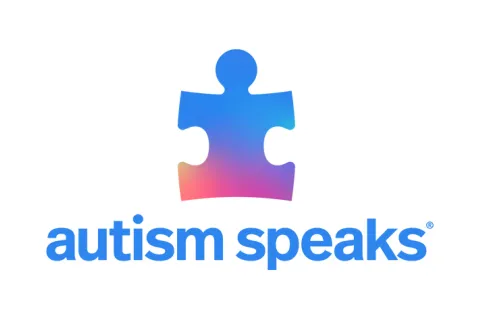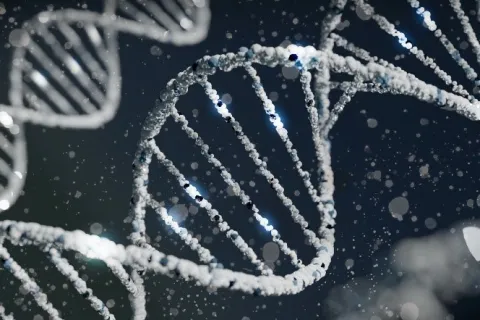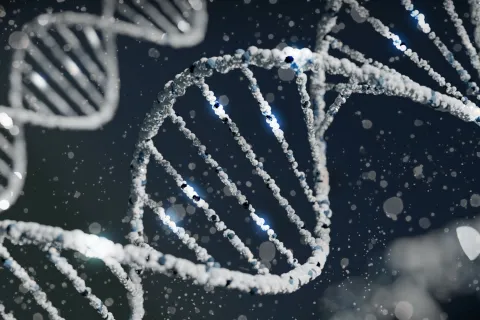Autism Speaks names top 10 studies of 2020
Autism Speaks science staff and advisors highlight the 2020 studies that most powerfully advanced understanding, treatment and support of people on the spectrum
February 18, 2021Today Autism Speaks announced its annual selection of studies that most powerfully advance its mission of enhancing lives today and accelerating a spectrum of solutions for tomorrow.
Autism Speaks science leadership and Medical and Science Advisory Committee selected these studies from autism research reports published in scientific journals last year across a range of scientific disciplines.
Note: Numerical order does not imply relative importance.
Advances in screening, diagnosis and Interventions:
-
Rogers SJ, Yoder P, Estes A, et al. A Multisite Randomized Controlled Trial Comparing the Effects of Intervention Intensity and Intervention Style on Outcomes for Young Children With Autism. J Am Acad Child Adolesc Psychiatry. 2020.
-
Mazurek MO, Parker RA, Chan J, Kuhlthau K, Sohl K, for the ECHO Autism Collaborative. Effectiveness of the Extension for Community Health Outcomes Model as Applied to Primary Care for Autism: A Partial Stepped-Wedge Randomized Clinical Trial. JAMA Pediatrics. 2020;174(5):e196306.
-
Wood, JJ, Kendall, PC, Wood, et al. Cognitive behavioral treatments for anxiety in children with autism spectrum disorder: A randomized clinical trial. JAMA Psychiatry. (2020) 77(5), 474-483.
These three studies were selected as examples of advancements in autism intervention science. According to committee members Connie Kasari, Ph.D., professor of psychiatry at UCLA’s David Geffen School of Medicine, and Stelios Georgiades, Ph.D., associate professor of psychiatry and behavioral neurosciences at McMaster University.
"These three studies advance autism research and practice by highlighting the importance of rigorous implementation methods to understand what, for whom, and how interventions work,” they said.
Kasari and Georgiades explain:
“In the first study, toddlers with ASD were included in a study that compared dose (hours per week) and teaching approach (Early Start Denver Model or discrete trial teaching). Study results showed that toddlers performed the same regardless of dose or teaching approach, and child characteristics did not predict outcomes either.
In the second, school-aged children with ASD and interfering anxiety were included in a study that tested whether adapting cognitive behavioral therapy (CBT) to address social communication challenges in ASD was better than standard CBT (and treatment as usual) in reducing anxiety symptoms. Study results showed that CBT adapted for children with ASD led to greater reduction in anxiety than standard CBT (and treatment as usual).
And finally, in a timely study, teleconference technology was used to mentor a diverse range of primary care practitioners in efforts to improve their clinical practice, knowledge, and self-efficacy regarding autism screening and comorbidity management. Study results showed no measurable changes in clinical practice; secondary analysis showed improvement in clinician knowledge and confidence in caring for patients with autism in primary care practices.
Findings from these studies offer important learnings that can guide the future of autism intervention science: 1) Studies that do not yield positive or significant intervention effects (null studies) are as important as those that do; 2) While educational interventions that use technology appear promising and practical, they do not guarantee improved clinical practice; 3) Carefully conducted modular approach to adapted models of existing interventions may yield more information on the active ingredients of interventions.”
Advances in uncovering and addressing health disparities:
-
Constantino, JN, Abbacchi, AM, Saulnier, C, et al. Timing of the diagnosis of autism in African American children. Pediatrics. (2020). 146(3).
Although the CDC found in its 2020 prevalence reporting that the gap between Black and white children had effectively been closed, this study confirms that Black children experience delays in diagnosis an average of 4 years after parents first become concerned about their child’s development.
“This study examined the largest known repository of diagnostic and phenotypic information on African American (AA) children with ASD (from the Autism Genetics Resource Exchance (AGRE). The authors describe an unacceptable delay in diagnosis of ASD and a marked (two-fold) increase in association with co-morbid intellectual disability in AA children over non-Hispanic white children,” said Joseph Piven, M.D., Thomas E. Castelloe Distinguished Professor of Psychiatry, Pediatrics and Psychology and director of the Carolina Institute for Developmental Disabilities at the University of North Carolina School of Medicine. “This important paper issues a clarion call to address these urgent public health concerns and to correct these untenable health disparities.”
-
Kaat, AJ, Shui, AM, Ghods, SS, et al. (2021), Sex differences in scores on standardized measures of autism symptoms: a multisite integrative data analysis. J. Child Psychol. Psychiatr., 62: 97-106.
This study assembled the largest sample of girls with autism to examine differences in how their autism symptoms affected scores on the standardized instruments used to diagnose autism, finding no significant sex-based differences. However, the authors point out that people who do not receive an autism diagnosis are inherently not included in the analysis, suggesting that future research should address sex differences among children or adults who do not receive an autism diagnosis.
-
Smith KA, Gehricke JG, Iadarola S, Wolfe A, Kuhlthau KA. Disparities in Service Use Among Children With Autism: A Systematic Review. Pediatrics. (2020) Apr;145(Suppl 1):S35-S46.
Using data from the Autism Speaks ATN-AIR-P data registry, researchers found that racial and ethnic minority groups and low-income families face significant barriers to getting needed services, acute care, specialized services, educational services, and community services. Unfortunately, the authors also found no studies looking at the effectiveness for different interventions to address these barriers, a critical next step in reducing health disparities for people with autism.
Advances in addressing outcomes for autistic adults:
-
Simonoff E, Kent R, Stringer D, et al. Trajectories in Symptoms of Autism and Cognitive Ability in Autism From Childhood to Adult Life: Findings From a Longitudinal Epidemiological Cohort. Journal of the American Academy of Child and Adolescent Psychiatry. 2020 Dec;59(12):1342-1352.
“In this first population-based, longitudinal study of autism to examine trajectories from childhood to adult life, the authors report an increase in mean IQ, without improvement in autistic symptoms, suggestive of continued cognitive development over the adolescent/early adult period,” said Piven. “This new finding provides an important new consideration for targeted treatments of autism during adolescence and suggests a new avenue of research aimed at understanding potential brain plasticity, beyond that seen in typically developing individuals, in the second decade of life.”
-
McCauley, J.B., Pickles, A., Huerta, M. and Lord, C. Defining Positive Outcomes in More and Less Cognitively Able Autistic Adults. Autism Research. (2020) 13: 1548-1560.
These findings contribute to knowledge for providers and families helping to plan for the transition to adulthood for adolescents with autism. Researchers uncovered several important factors – including daily living skills, fewer mental health problems, family demographics, and subjective measures of happiness — that impact positive outcomes for autistic people without cognitive disability, giving providers and families more direction in how to tailor transition planning for each person.
Advances in understanding the genetics and biology of autism
-
Satterstrom FK, Kosmicki JA, Wang J, et al. Large-Scale Exome Sequencing Study Implicates Both Developmental and Functional Changes in the Neurobiology of Autism. Cell. 2020 Feb 6;180(3):568-584.e23. (Joe B. author)
“This long-awaited paper from Satterstrom, Kosmicki, and Wang describes a ground-breaking effort to identify genes that are disrupted by rare variants in people with autism spectrum disorder (ASD),” said Jeremy Veenstra-Vanderweele, M.D., Ruane Professor for The Implementation of Science for Child and Adolescent Mental Health at Columbia University Medical Center.
A large, international consortium sequenced the exome, containing the complete coding sequence of almost all genes, from nearly 12,000 people with autism, as well as many of their parents and a control population. They identified 102 genes that contribute to ASD risk, with 53 of them more strongly associated with ASD than with neurodevelopmental delay. The 102 genes that they implicated in ASD include genes that are involved in regulation of other genes, as well as genes involved in communication between brain cells.
“This gives us a much clearer sense of where to focus research efforts to understand brain development and develop potential treatments for some individuals with ASD,” said Dr. Veenstra-VanderWeele. “It also offers further evidence that exome sequencing should be considered as a clinical test for all people with ASD.”
-
Trost, B., Engchuan, W., Nguyen, C.M. et al. Genome-wide detection of tandem DNA repeats that are expanded in autism. Nature 586, 80–86 (2020).
This paper from researchers at The Hospital for Sick Children (SickKids) reported new genetic changes and specific genes linked to autism in a study using Autism Speaks’ MSSNG whole genome database.
With a new data computing approach, Dr. Ryan Yuen, Ph.D., was able to quickly search for tandem repeat expansions in the genome of people with autism, uncovering that these changes were likely contributing to the development of autism – and in several new areas of the genome that were not previously linked to autism. Tandem repeat expansions are sections of DNA that get duplicated next to each other, in sequence, many times over, in the way one wrinkle in a piece of paper when photocopied becomes multiple wrinkles. The larger the number of repeats of that DNA wrinkle, the greater the chances are that the person will develop a genetic condition.
This type of big data analysis is only possible with large databases of genetic information, such as the more than 11,000 whole genome sequences of people with autism and their families in the MSSNG database, but more importantly the approach MSSNG undertook, whole genome sequencing – looking at the entire DNA — was critical to finding these repeats in areas not previously studied.








